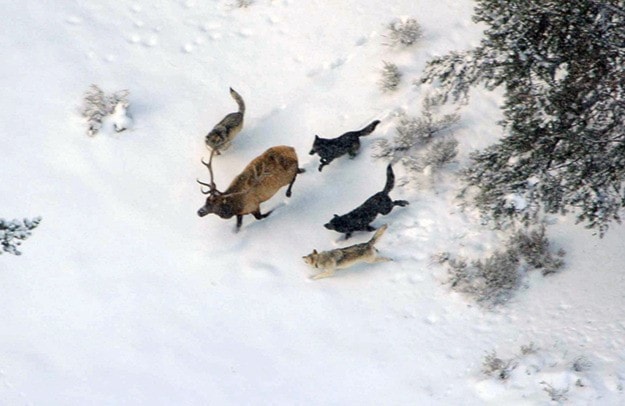Revelstoke is set to play host to an international academic conference on predator-prey dynamics next week.
The Columbia Mountain Institute of Applied Ecology is hosting a three-day conference at Revelstoke Mountain Resort that will feature everyone from a local hunter to an expert on great white sharks to a wildlife expert from South Africa.
"You have a local guide outfitter with an emeritus professor from South Africa in the same room," says Rob Serrouya, a local caribou researcher who is helping to organize the conference. "That doesn't happen very often."
The title of the conference is "Predator-Prey Dynamics: From Theory to Management." From April 5–7, a mix of academics, field workers and government policy makers will give presentations on various issues at the Revelation Lodge at RMR. It is possibly the biggest ever gathering of experts in Revelstoke.
"The theme of the conference is from academic theory all the way down to management," said Serrouya. "What effects people's lives in terms of how hunting regulations are set and how to manage a world where predator numbers are expanding and how that affects different scenarios for managing prey populations that people also like to hunt."
Days one and two of the conference will feature academics presenting their research. There are presentations about cougar predation on elk, wolves and moose, the re-introduction of wolves to Yellowstone National Park, bird management at Vancouver International Airport, and the interaction of grey seals and white sharks. Most appear to be highly academic in nature.
Naturally, because this is Revelstoke, there are several presentations on Caribou, though only two out of 27 talks list caribou in the title. "I'm very happy about that," said Serrouya. "We tend to be way too caribou-centric in Revelstoke."
The keynote speech is by Liana Zanette from the University of Western Ontario. She will give a talk titled "Fear of predators as an ecosystem service."
"She's exploring a whole new paradigm," said Serrouya. "Rather than just thinking about numbers of predators and numbers of prey, and straight up percentages of consumption, she's looking at the big indirect effect of predators — the effect of fear. How the effect of fear stresses out prey and how their reproduction and survival is affected even though they're not getting eaten."
The research could lead to methods to control urban deer populations without resorting to culls, he added.
The keynote speech takes place at the Revelation Lodge on Wednesday, April 6, at 7 p.m. and is open to the public. The gondola will run from 7–9 p.m. for people wishing to attend.
The third day of the conference will likely be of the biggest interest to the public. On Thursday, Apr. 7, the academics will give way to the people on the ground and in government.
"We're really trying to stress this bridge between academic and on the ground, real world management decisions," said Serrouya.
Brian Glaicar, who owns Monashee Outfitting, a hunting lodge north of Revelstoke, will give a presentation on his perspectives of predator-prey management in British Columbia. There will also be a talk by Jesse Zerman of the BC Wildlife Federation, and talks about elk and moose management by government experts.
"On the third day people could come and learn about hunting policy in B.C," said Serrouya.
The conference will conclude with a trip to the Revelstoke Caribou Rearing in the Wild maternity pen north of Revelstoke.
Why is this conference taking place? Why look at the issue of predator-prey dynamics now? Serrouya said it is a good time to review 30 years of research. He said we're at a time when predators are returning to many areas from which they were removed during much of the 20th century. Only since the 1980s have predators come back to many ecosystems. An example is the re-introduction of wolves to Yellowstone National Park, and the return of wolves to the East Kootenays.
"We've got this new paradigm now where we have to thing about how to maintain an ecosystem and manage ungulates in the presence of predators as well as humans," said Serrouya. "That's timely now to do it."
Serrouya said the conference could be of interest to local hunters. He also said it demonstrates Revelstoke's emergence as a centre for science and research.
"Revelstoke is an awesome place to do research and we have a hub of scientists here, which is unusual," he said.
Visit cmiae.org/event/predator-prey-dynamics-from-theory-to-management-conference for more information on the conference.
